Discover 20 hidden attractions, cool sights, and unusual things to do in Brasilia (Brazil). Don't miss out on these must-see attractions: Palácio do Planalto, Palácio da Alvorada, and Cathedral of Brasília. Also, be sure to include Cultural Complex of the Republic in your itinerary.
Below, you can find the list of the most amazing places you should visit in Brasilia (Distrito Federal).
Table of Contents
Palácio do Planalto
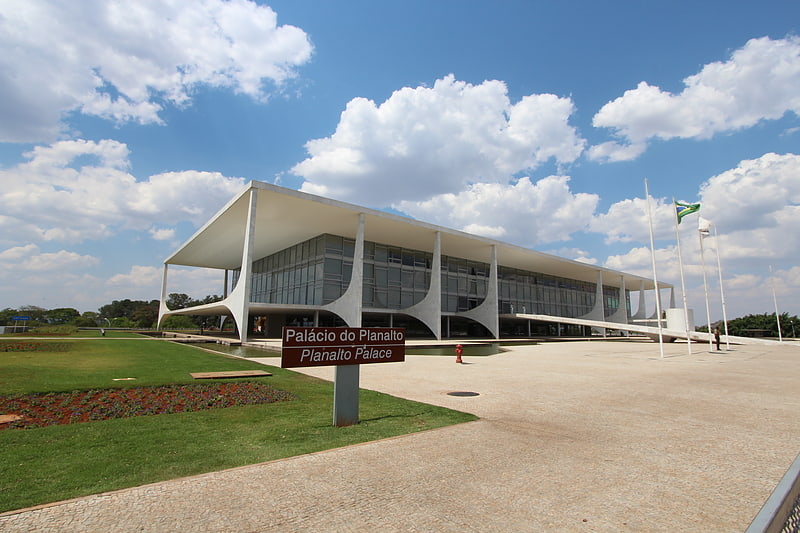
Iconic building with presidential office. The Palácio do Planalto in Brasília is the official workplace of the president of Brazil. The building was designed by architect Oscar Niemeyer in 1958 and inaugurated on April 21, 1960. It has been the workplace of every Brazilian president since Juscelino Kubitschek. It is located at the Praça dos Três Poderes, to the east of the National Congress of Brazil and across from the Supreme Federal Court.
It is one of the official palaces of the Presidency, along with the Palácio da Alvorada, the official residence. Besides the President, other high ranking government officials also work from the Planalto, including the Vice President and the Chief of Staff; the other government ministry buildings are located on the Ministries Esplanade. As the seat of government, the term Planalto is often used as a metonym for the executive branch of the federal government.
The building, constructed in the modernist style, is part of the Brasília World Heritage Site, designated by UNESCO in 1987.[1]
Address: Praça dos Três Poderes, 70150-900 Brasilia (RA I - Brasília)
Palácio da Alvorada
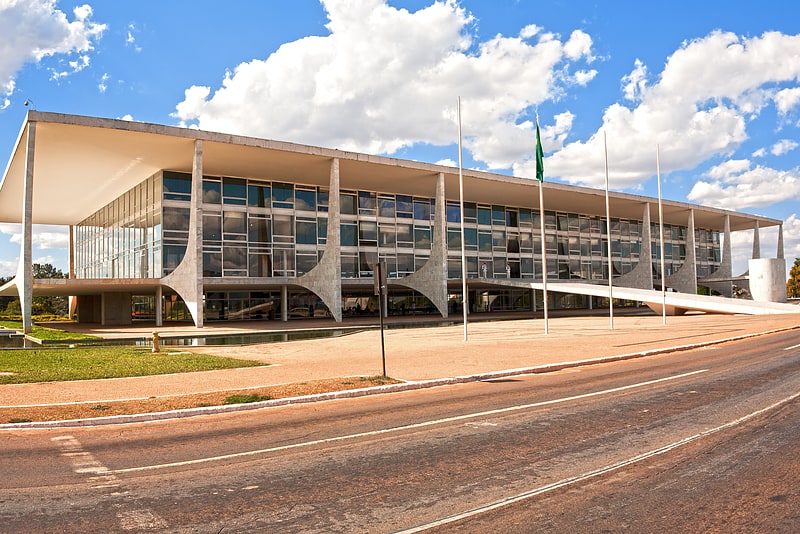
Modernist home of Brazil's president. The Palácio da Alvorada is the official residence of the President of Brazil. It is located in the national capital of Brasília, on a peninsula at the margins of Paranoá Lake. The building was designed by Oscar Niemeyer and built between 1957 and 1958 in the modernist style. It has been the residence of every Brazilian president since Juscelino Kubitschek. The building is listed as a National Historic Heritage Site.[2]
Address: Brasilia, Via Presidencial, Zona Cívico-Administrativa – CEP 70150-000
Cathedral of Brasília

Also known as: Catedral Metropolitana de Brasília
Cathedral featuring avant-garde design. The Cathedral of Brasília is the Roman Catholic cathedral serving Brasília, Brazil, and serves as the seat of the Archdiocese of Brasília. It was designed by Brazilian architect Oscar Niemeyer and calculated by Brazilian structural engineer Joaquim Cardozo, and was completed and dedicated on May 31, 1970. The cathedral is a hyperboloid structure constructed from 16 concrete columns, weighing 90 tons each.[3]
Address: Esplanada dos Ministérios, Lt. 12, 70200-610 Brasília (RA I - Brasília)
Cultural Complex of the Republic
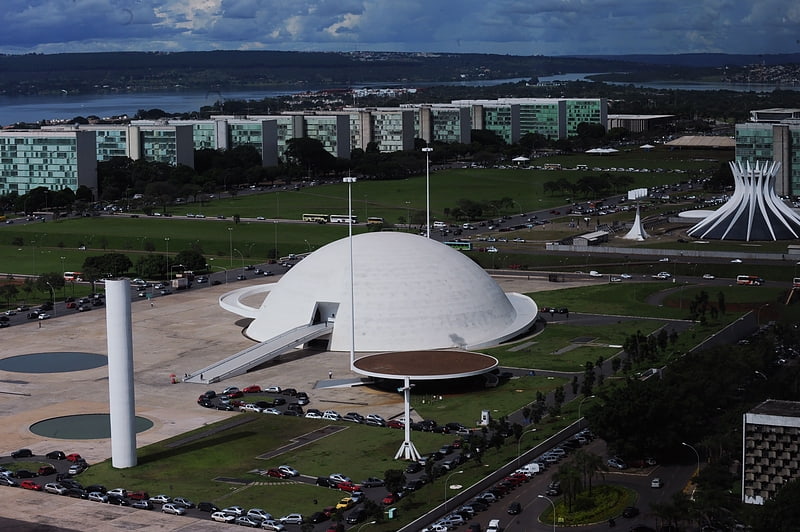
Cultural center in Brasília, Brazil. The Complexo Cultural da República is a cultural center located along the Eixo Monumental, in the city of Brasília, Brazil. It is formed by the National Library of Brasília and the National Museum of the Republic. Both buildings were designed by Pritzker Prize-winning Brazilian architect Oscar Niemeyer and inaugurated in 2006.[4]
Itamaraty Palace
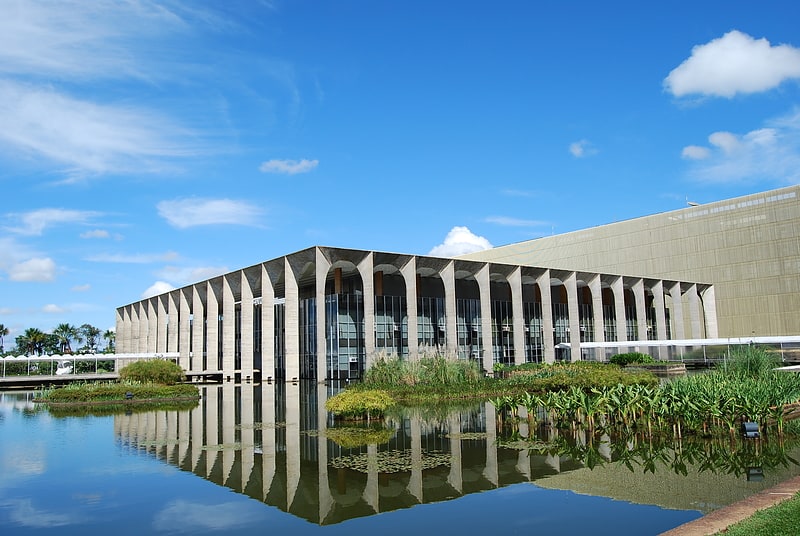
Also known as: Palácio Itamaraty
Niemeyer government building and art space. The Itamaraty Palace, also known as the Palace of the Arches, is the headquarters of the Ministry of Foreign Affairs of Brazil. It is located in the national capital of Brasília. The building was designed by architect Oscar Niemeyer and inaugurated on April 21, 1970. It is located to the east of the National Congress building along the Ministries Esplanade, near the Praça dos Três Poderes.
In Brazil, Itamaraty is generally used as a metonymy for the Ministry of Foreign Affairs. The name stems from that of the palace in Rio de Janeiro which was the headquarters of the ministry before the Brazilian capital and government were moved to Brasília.[5]
Address: Esplanada dos Ministerios Bloco H, 70170-900 Brasilia (RA I - Brasília)
Juscelino Kubitschek bridge

Also known as: Ponte Juscelino Kubitschek
Unique modernist bridge built in 2002. Juscelino Kubitschek Bridge, commonly called Ponte JK, is a steel and concrete arch bridge across Lake Paranoá in Brasília, Brazil. It connects the eastern shore of the lake – where Lago Sul, Paranoá and Brasília International Airport are located – to Brasília's city center, via the Monumental Axis. Opened to traffic on December 15, 2002, its distinctive silhouette quickly became a Brasília landmark.
The bridge is named after President Juscelino Kubitschek, who served from 1956 to 1961, and is generally considered the main figure supporting the construction of the planned city of Brasília. It was designed by architect Alexandre Chan and structural engineer Mário Vila Verde.[6]
Teatro Nacional Cláudio Santoro
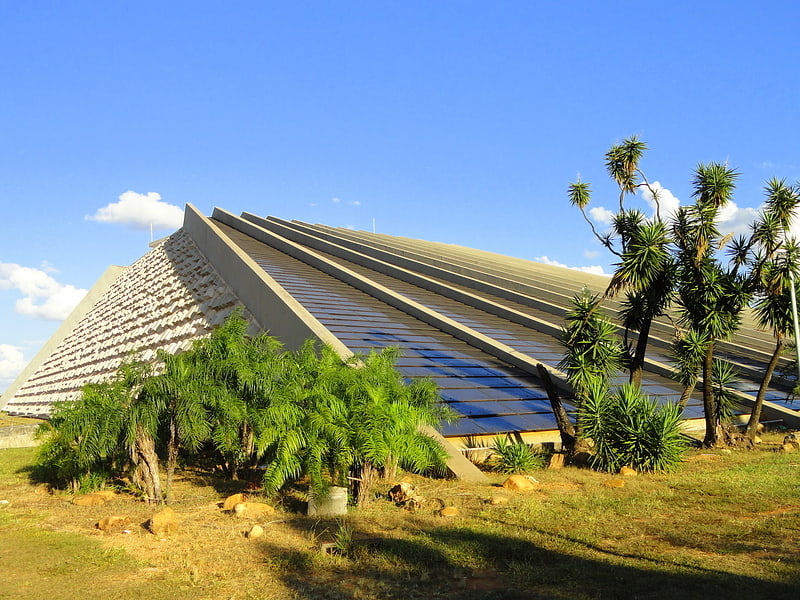
Performing arts theater in Brasília, Brazil. The Cláudio Santoro National Theater is a multi-theater building in Brasília, Brazil. It was designed by Oscar Niemeyer in the Modern architectural style. Construction began on July 30, 1960, and the building was completed in 1966. Built in the shape of a truncated pyramid, it is the largest building in Brasilia designed by Niemeyer specifically for the arts. The building was closed for renovation in 1976, and was reopened on April 21, 1981.
The National Theater is operated by Secretary of Culture of the Federal District and is home to three venues; the 60-seat Alberto Nepomuceno theater, the 407-seat Martins Pena theater, and the 1,407 seat Villa-Lobos theater. The complex also includes an exhibition gallery that is accessible to the public.
The Theater has been under renovation for more than two years and remains closed to the public.[7]
Address: Setor Cultural Norte Via N2, Brasilia (RA I - Brasília)
Praça dos Três Poderes
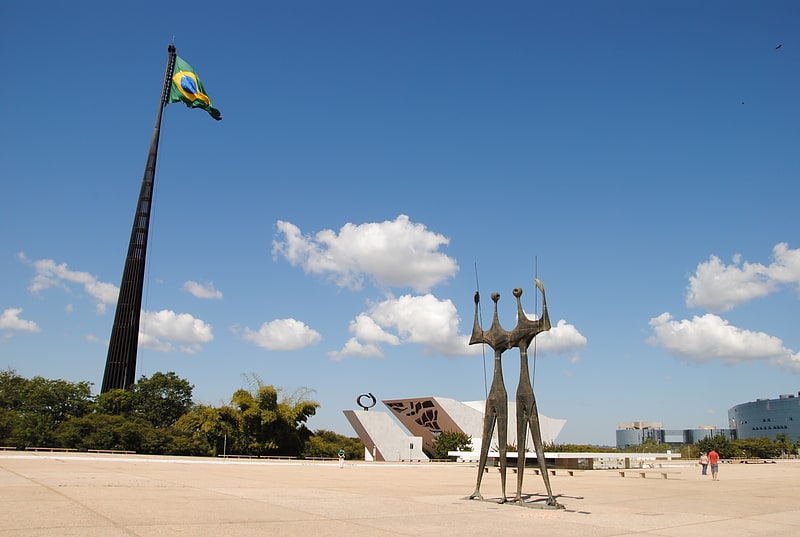
White stone plaza with executive offices. Praça dos Três Poderes is a plaza in Brasília, the capital of Brazil. The name is derived from the presence of the three governmental powers around the plaza: the Executive, represented by the Palácio do Planalto; the Legislative represented by the Congresso Nacional; and the Judiciary, represented by the Supremo Tribunal Federal.
The plaza was designed by Lúcio Costa and Oscar Niemeyer as a place where the three powers would meet harmoniously, it has now become a tourist attraction of Brasília.
The plaza is home to the largest flag in the world to be flown regularly (in this case, continuously). The Brazilian flag hoisted weighs about 600 kilograms (1300 pounds) and has never been taken down (not counting monthly replacements) since the capital was inaugurated on 21 April 1960. The flag is changed monthly in the presence of Presidential Guard Battalion, Independence Dragoons, other troops and sometimes the President of Brazil.[8]
Panteão Da Patria
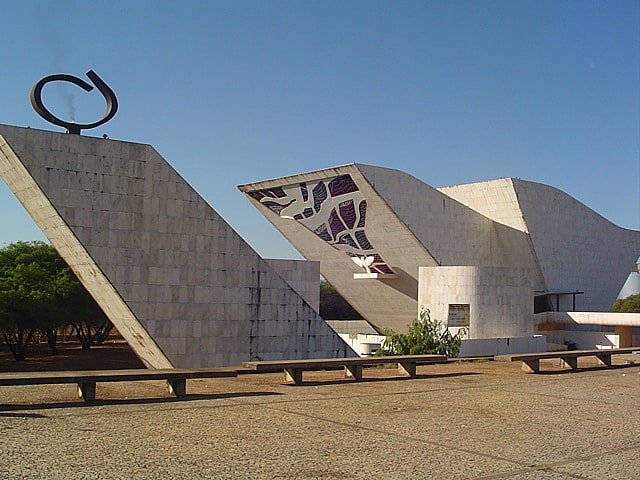
Also known as: Panteão da Pátria e da Liberdade Tancredo Neves
Building in Brasília, Brazil. The Tancredo Neves Pantheon of the Fatherland and Freedom is a cenotaph in the Brazilian capital Brasília, dedicated to the honour of national heroes. It was conceived during the national shock following the death in 1985 of Tancredo Neves, the first elected civilian president after twenty years of military rule.
Unlike other national pantheons it is not a mausoleum and does not contain any tombs.
It is located in the Praça dos Três Poderes in Brasilia. It was designed by Oscar Niemeyer as a modernist building symbolizing a dove. It has three floors with a total area of 2,105 m2 (22,660 sq ft). The foundation stone was laid by French President François Mitterrand on 15 October 1985.
The exhibition area, entirely dedicated to Tancredo Neves, was reopened in 2013. It includes copies of documents, films by Silvio Tendler and interactive technologies.
The names of those honoured can be found in the Livro de Aço ('Book of Steel'), also called the Livro dos Heróis da Pátria ('Book of National Heroes'). This is housed on the third floor between the Painel da inconfidência, a sculpture in honour of the martyrs of eighteenth-century uprising in Minas Gerais and the stained glass by Marianne Peretti. Each time a new name and biography is entered into its metal pages a ceremony in memory of the honouree is celebrated.[9]
Address: Pça. dos Três Poderes, 70100-000 Brasília (RA I - Brasília)
Paranoá Lake
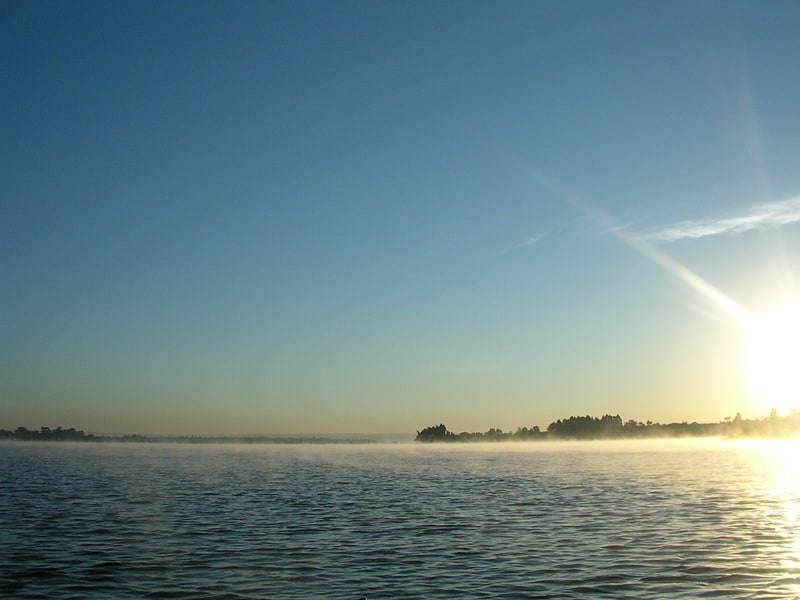
Also known as: Lago Paranoá
Manmade lake for recreation and diving. Lake Paranoá is an artificial lake located in Brasília, the capital of Brazil. During construction of the city, the Paranoá River was dammed to form the lake, which has a circumference of 80 km. On its shores are embassies and consulates, sports clubs, restaurants, the residential areas of Lago Sul and Lago Norte, the University of Brasília, the Olympic Center, and the Palácio da Alvorada, the official residence of the President of Brazil.[10]
Memorial JK
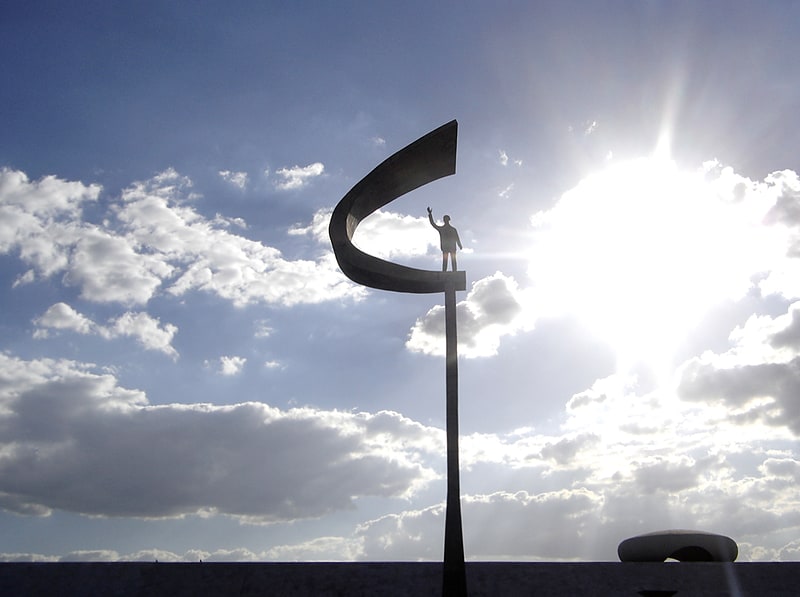
Museum in Brasília, Brazil. The JK Memorial is a mausoleum, presidential memorial and museum dedicated to Juscelino Kubitschek, the 21st President of Brazil and the founder of Brasília, capital city of Brazil since 1960. Designed by Oscar Niemeyer, the memorial is located in the Monumental Axis in Brasília. It is the final resting place of President Kubitschek.[11]
Address: Eixo Monumental - Lado Oeste, Praca do Cruzeiro, 70070-300 Brasilia (RA I - Brasília)
Brasilia TV Tower
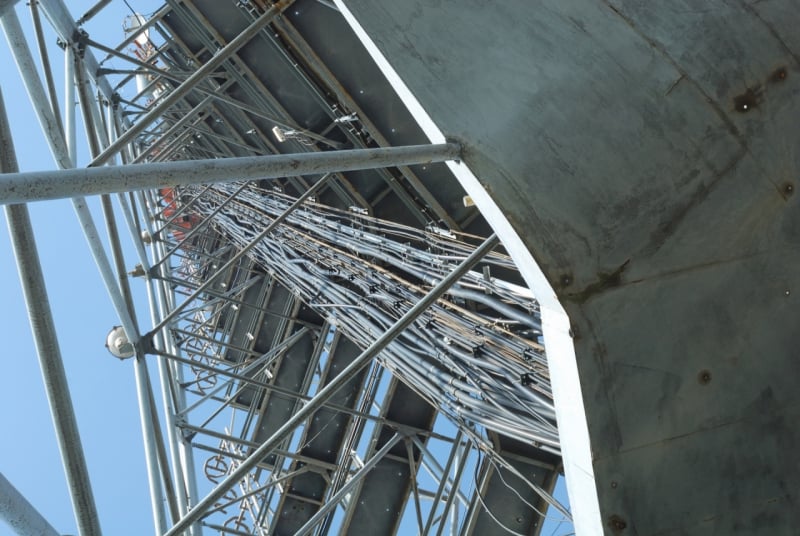
Also known as: Torre de TV de Brasília
Tower in Brasília, Brazil. The Brasília TV Tower was completed in 1967 at a height of 218 metres. The tower added another six metres after additions by the TV channel Bandeirantes. First it was 212 then it added for the current height of 224 metres. The tower is the fourth tallest structure in Brazil and is also one of the most noticeable from Juscelino Kubitschek Bridge. It is located on Brasilia's Monumental Axis.[12]
Address: Torre de TV Bl R Box 586, 70070-000 Brasília (RA I - Brasília)
Brasilia Digital TV Tower
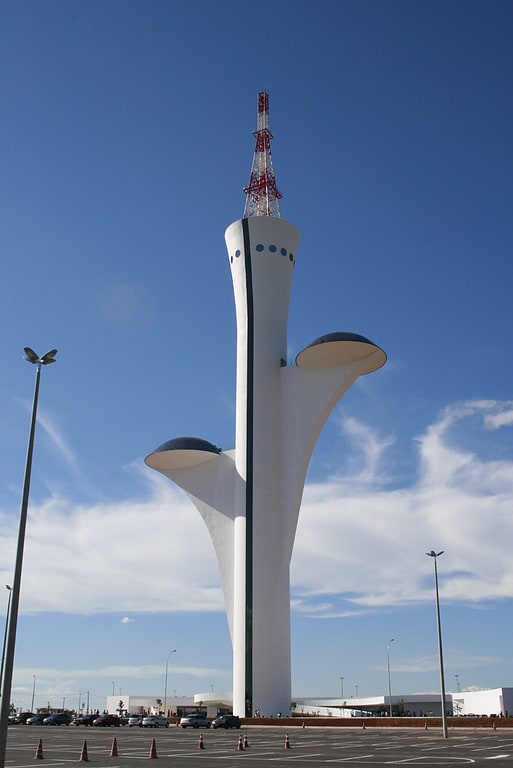
Also known as: Torre de TV Digital de Brasília
Tower in Brazil. The Brasilia Digital TV Tower is a broadcast tower which made digital television signal available for the whole Federal District and surroundings. It is also known as the “Flor do Cerrado”, the Cerrado flower. Initially planned to open to the public on April 21, 2010, as a celebration of the 50th anniversary of the City of Brasília, the tower was only inaugurated two years later on April 21, 2012.
The tower was one of the final designs of Brazilian architect Oscar Niemeyer, and cost R$75 million.
The tower is 182 meters tall to the top of the antenna. The enclosed building is reinforced concrete structure for 120 meters, with 50m of metallic structure above that, topped by a 12m television antenna. The main building contains two observatories. The highest one, 80 meters above the ground, contains a restaurant with a panoramic view. The other one is used as an art gallery.[13]
Clube Katanka
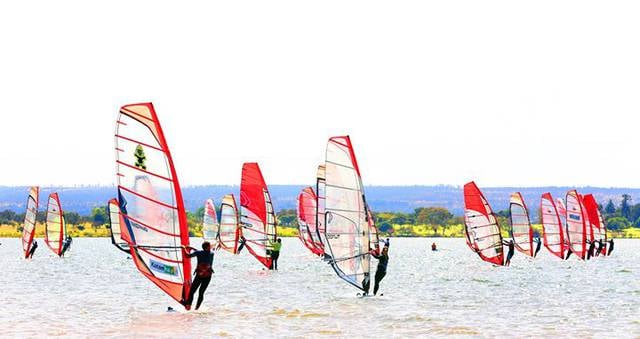
Gear rental, Outdoor activities, Sailing, Marina
Address: Trecho Sces Trecho 4, 70200-004 Brasilia (RA I - Brasília)
Dom Bosco Church
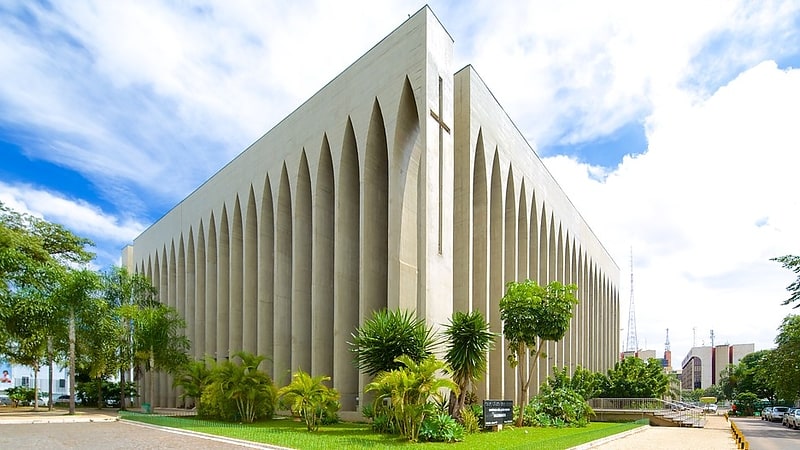
The Dom Bosco Sanctuary, also called by its official name, Santuário São João Bosco, is a Catholic church in Brasilia, dedicated to the city's second patron saint, Saint John Bosco, the Dom Bosco, who is said to have prophesied the existence of the Brazilian capital in the 19th century during a dream. It is administered by the Salesian Congregation and is located in Asa Sul. It is one of the best known religious temples in the city, and despite its name, it has only officially become a sanctuary since 2017.
It was designed by architect Carlos Alberto Naves and is especially famous for its stained glass windows, receiving thousands of tourists every year and being considered one of the Seven Wonders of Brasília's Cultural Heritage. The creation of the church was an initiative of the Salesians in partnership with the Federal Government. Inspired by Dom Bosco's dream of Brasília, a small chapel was also built in front of Lake Paranoá, the Ermida Dom Bosco.
Address: SEPS 702 Bl. B, 70330-720 Brasília (RA I - Brasília)
Monumental Axis
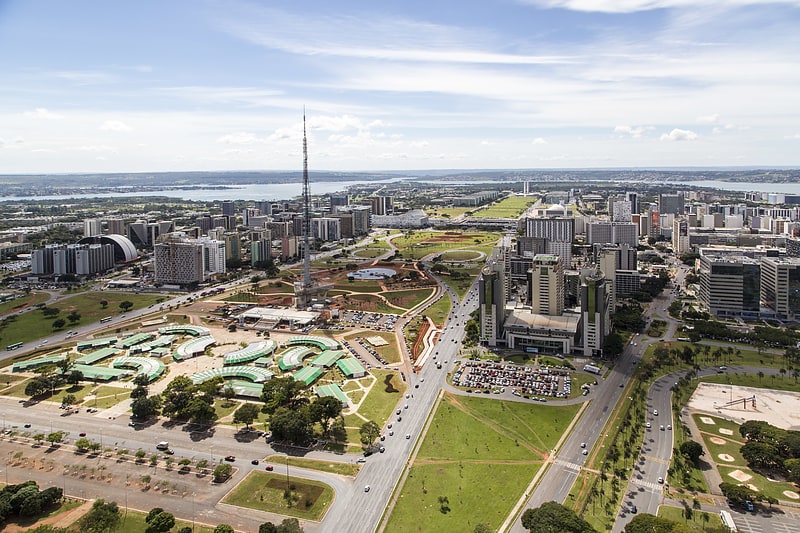
Also known as: Eixo Monumental
Avenue in Brasília, Brazil. The Monumental Axis is a central avenue in Brasília's city design.
The avenue begins on the National Congress of Brazil building and is considered part of the DF-002 road. Its first section is known as "Ministries Esplanade" ("Esplanada dos Ministérios"), as it is surrounded by ministries buildings. Many important government buildings, monuments and memorials are located on the Monumental Axis.
A common urban legend persists that the Monumental Axis is the widest road in the world, where " cars can drive side by side". This is untrue, as the road consists of two avenues with six lanes on either side; a total of twelve lanes. However, the street has been featured in the Guinness Book of Records as having the widest median strip of a highway in the world.
On April 21, 2008, a year before they formally broke up, the Mexican pop group RBD performed a free concert to a crowd of 500,000 on the Monumental Axis during Empezar Desde Cero Tour 2008. The show was to celebrate the 48th Anniversary of the founding of Brasília. It was recorded and released on DVD with the title Live in Brasilia. The crowd in attendance was the largest for which the group had performed.[14]
Little Church

The Nossa Senhora de Fátima Church, also known as Igrejinha da 307/308 Sul, was the first Catholic temple in masonry to be erected in Brasília, inaugurated on June 28, 1958.
After the foundation stone was laid on October 26, 1957, the church was built in one hundred days, with the objective of paying a promise made by first lady Sarah Kubitschek, in gratitude for the cure of her daughter Márcia.
Address: EQS 307/308, 70354-400 Brasília (RA I - Brasília)
Taguatinga
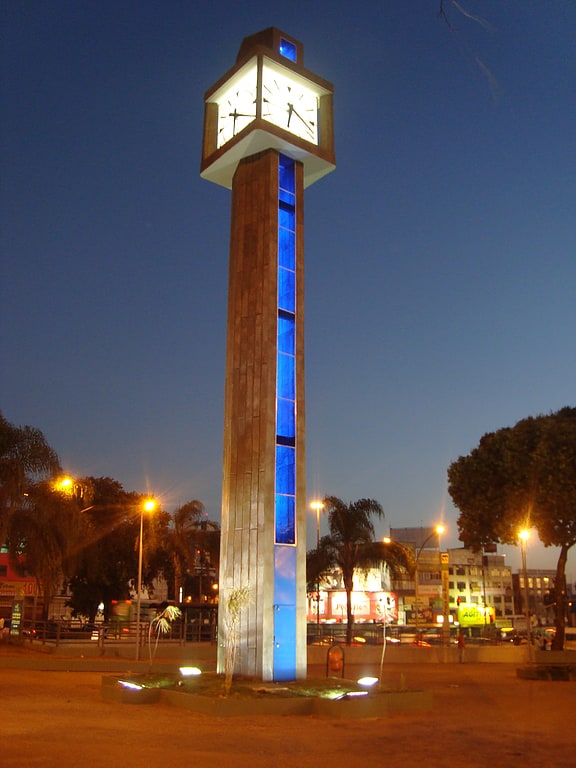
Taguatinga is an administrative region in the Federal District in Brazil.[15]
Retiro Island
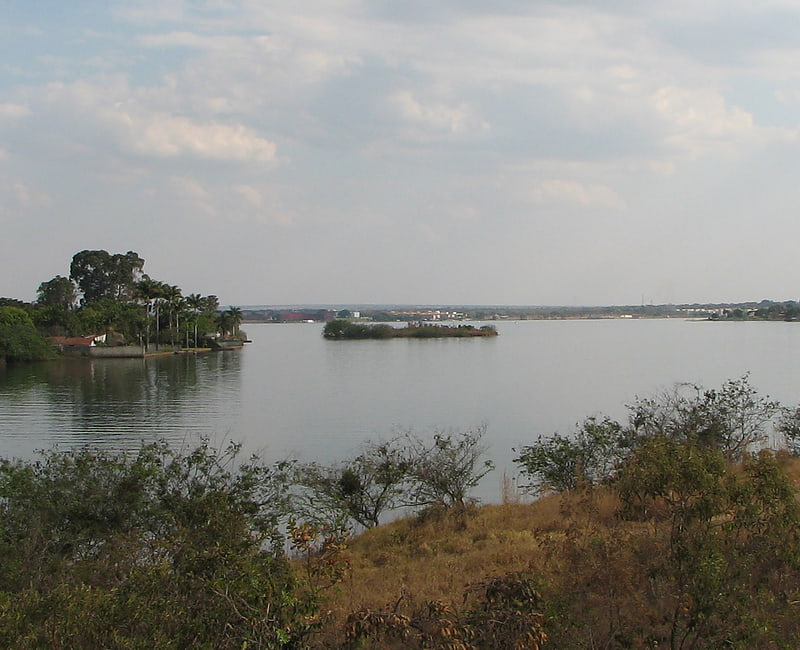
Island in Brazil. The Retiro Island is the second largest of the three islands of Lake Paranoá in Brasília, Distrito Federal, Brazil. It is approximately 1.0 hectare, is located close to the ML 7 of Lago Norte neighborhood and is declared Lake Paranoá Ecological Reserve. The other two islands are Paranoá Island and Clubes Island.[16]
Paranoá Island
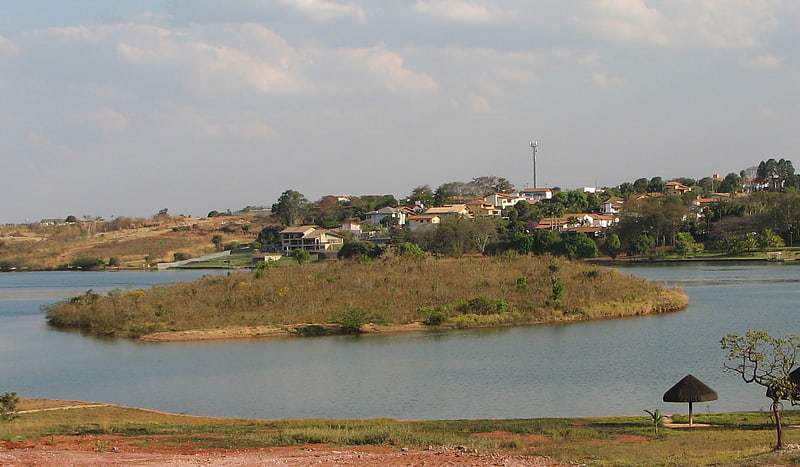
The Paranoá Island is the largest of the three islands of Lake Paranoá in Brasília, Distrito Federal, Brazil. It is approximately 1.54 hectares, is located close to the ML 4 of Lago Norte neighborhood and is declared Lake Paranoá Ecological Reserve. The other two islands are Retiro Island and Clubes Island.[17]